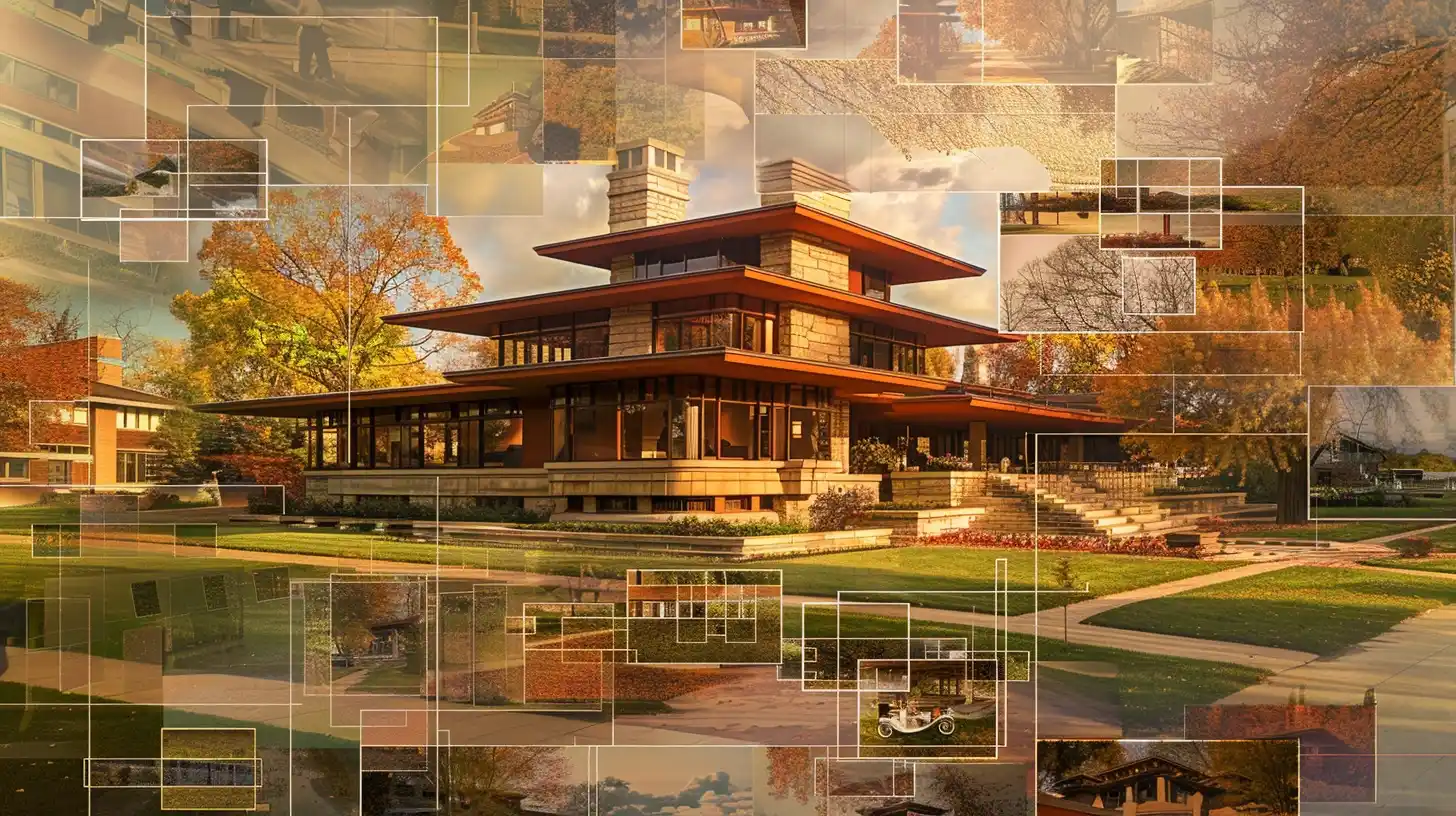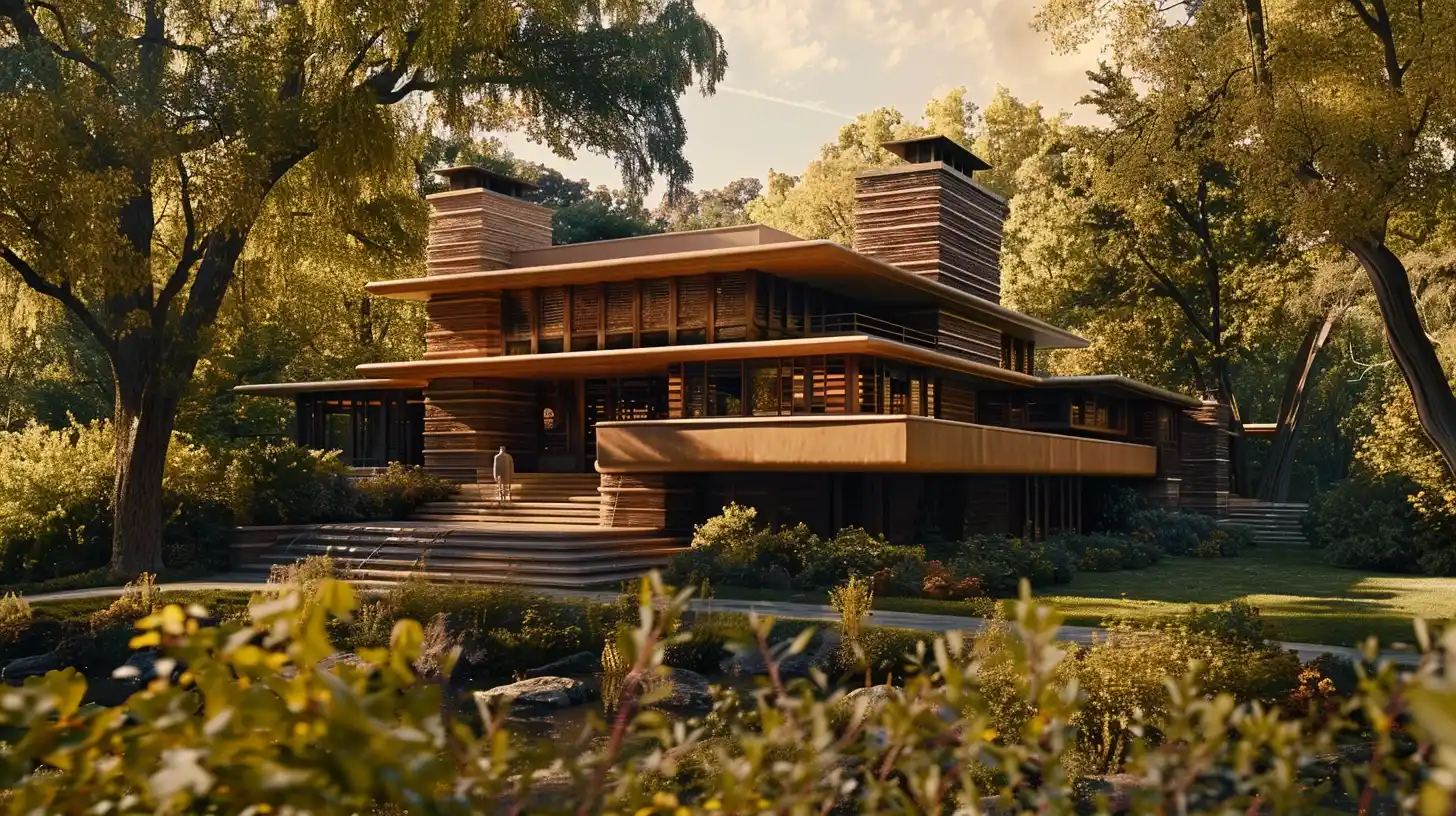
Everything And Anything About The Prairie Architectural Style

Prairie architectural style, originating in the late 19th and early 20th centuries, emerged primarily in the American Midwest, notably associated with renowned architect Frank Lloyd Wright. This distinctive style is characterized by its horizontal lines, low-pitched roofs with wide overhanging eaves, and integration with the surrounding landscape. Prairie-style homes aim to harmonize with nature, evoking the vast, flat expanses of the native prairie landscape.

Latest
Other Topics
The Arts and Crafts Movement’s Hand In The Praire Architectural Style
The Arts and Crafts Movement deeply influenced the Prairie School movement, emphasizing handcrafting and craftsmanship as a response to mass production techniques. Architects sought to create a uniquely American architectural identity that departed from European classical styles. Frank Lloyd Wright, the most prominent figure of the Prairie School, advocated for “organic architecture,” where structures appear as if naturally growing from the site. This emphasis on unity with the land and horizontal orientation was seen as distinctly American, reflecting the country’s expansive, undeveloped landscapes.
Some Notable Figure-Heads In the Praire Architectural Style Movement
Notable Prairie School architects, besides Wright, include Walter Burley Griffin, Marion Mahony Griffin, and William Eugene Drummond, among others. Their work spread beyond the Midwest, influencing residential design across the United States and internationally. Prairie-style architecture is characterized by open floor plans, horizontal emphasis, and the use of natural materials like wood and stone.
The Prairie School style fell out of favor by the mid-1920s but has seen a resurgence of interest since the late 20th century. Today, Prairie architectural style homes continue to inspire modern architecture and interior design, reflecting a timeless appeal and a connection to nature.
Let’s Talk About The Prairie Architectural Features
Prairie architectural style is distinguished by several key features that reflect its aim to harmonize with the surrounding landscape while emphasizing craftsmanship and simplicity. Horizontal lines play a central role, mirroring the wide, flat expanses of the Midwestern prairie. This horizontal orientation is evident in the design of roofs, windows, and overall building forms. Low-pitched roofs with broad overhanging eaves further enhance this horizontal emphasis, providing shade and protection while blending seamlessly with the natural surroundings.
Open Floor Plans
Open floor plans are another hallmark of Prairie-style homes, promoting a sense of spaciousness and connectivity between indoor and outdoor spaces. Large windows, often grouped in horizontal bands, allow abundant natural light to flood the interior, blurring the boundaries between inside and outside. These windows not only provide views of the landscape but also contribute to the aesthetic unity and coherence of Prairie-style architecture.
Natural Materials
Natural materials, such as wood, stone, and brick, are prominently featured in Prairie-style homes, reflecting a commitment to authenticity and craftsmanship. These materials contribute to the structures’ visual appeal and age gracefully, further enhancing the timeless quality of the Prairie architectural style. Additionally, minimal ornamentation is characteristic of Prairie-style design, with emphasis placed on the inherent beauty of the materials and the simplicity of form.
Organic Architecture
Frank Lloyd Wright’s concept of “organic architecture” is central to Prairie design philosophy, advocating for structures that appear as if they naturally grew from the site. This integration with the landscape is achieved through careful siting and thoughtful design decisions, fostering a sense of harmony between the built environment and its surroundings.
The Legacy and Modern Resurgence of Prairie Architecture
Despite its initial decline in popularity after the mid-1920s, Prairie architectural style has experienced a resurgence of interest in recent decades. The timeless appeal of its horizontal lines, open floor plans, and integration with nature continues to captivate homeowners, architects, and designers alike. Today, Prairie-style homes are sought after for their distinctive aesthetic, functional layouts, and connection to the land.
Shaping Modern Architecture
The influence of Prairie architecture extends beyond residential design, shaping various aspects of modern architecture and interior design. Elements such as horizontal emphasis, natural materials, and open living spaces have become enduring hallmarks of contemporary design aesthetics. The principles of simplicity, craftsmanship, and harmony with nature espoused by Prairie architects continue to resonate with a new generation of designers and homeowners.
Preservation and Restoration Of Historic Buildings
Moreover, the preservation and restoration of historic Prairie-style buildings have become priorities for architectural conservationists and enthusiasts. Museums, historic sites, and educational initiatives dedicated to the Prairie School movement have emerged, highlighting its significance in American architectural history. By honoring the legacy of Prairie architects and celebrating their contributions to the built environment, these efforts ensure that their visionary work remains accessible and appreciated for generations to come.
Final Thoughts
Prairie architectural style stands as a testament to the ingenuity, creativity, and spirit of innovation of its pioneering architects. Its enduring legacy continues to inspire and influence architectural practice worldwide, reflecting a deep-seated appreciation for the natural world and a commitment to design excellence. Whether you’re drawn to the timeless elegance of Prairie-style homes or seeking inspiration for your own architectural projects, the allure of Prairie architecture is undeniable.
To further explore Prairie architectural style and expert guidance on bringing your architectural visions to life, reach out to Designs Boss today. Our team of experienced professionals is dedicated to helping you create spaces that reflect your unique vision, values, and lifestyle. Let us partner with you on your architectural journey and transform your dreams into reality.


